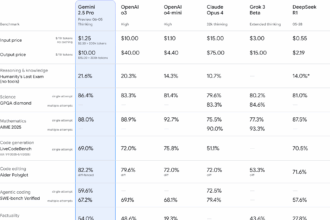Table of Contents
ToggleBroadcom Earnings: Stock Falls Despite Solid Results
Broadcom’s stock falls following its Q1 earnings, despite robust financial performance and growth. After reporting strong revenue and earnings figures, the market reacted negatively. This decline reflects investor caution due to signs of slowing momentum in the AI chip segment.
Stock Performance and Investor Sentiment
Broadcom’s shares dropped sharply in after-hours trading, falling about 5% to $246.31. The stock had already slipped 0.44% during regular trading, closing at $259.93 on June 5. This sell-off followed an impressive rally: the stock surged nearly 100% from its April lows, recovering strongly from an earlier 40% correction this year.
Investors are shifting focus. The initial excitement around AI appears to be stabilizing. Attention is turning toward whether AI-driven revenue growth will remain strong over time or start to slow more significantly.
Decelerating AI Growth
Investor concern centers on Broadcom’s AI chip revenue. While it still grows substantially, its pace has eased. AI-related product revenue increased by 46% year-over-year (YoY) this quarter, a notable deceleration from the previous quarter’s 77% growth.
This slower growth rate suggests the AI segment is cooling after a period of rapid gains. Market watchers interpret this as a sign that Broadcom’s AI business may face more moderate expansion ahead.
Financial Performance
Despite worries about AI growth, Broadcom delivers strong overall results. The company reported double-digit growth across key metrics. Q1 revenue and earnings beat analyst expectations. Margins remain solid, and management’s outlook remains optimistic.
| Metric | Q2 Result | YoY Growth | Analyst Estimate |
|---|---|---|---|
| Revenue | $15 billion | 20% | $14.96 billion |
| Adjusted Net Income | $7.787 billion | 44% | – |
| Adjusted EBITDA | $10.001 billion | 34.6% | – |
| Adjusted EPS | $1.58 | 43.6% | $1.56 |
The $15 billion revenue marks a slowdown from Q1’s 25% annual growth, continuing a trend of moderated momentum. EBITDA accounted for 66.7% of revenue, indicating stable operating profitability. Adjusted earnings per share (EPS) rose to $1.58, surpassing consensus.
Forward-Looking Guidance
Broadcom projects third-quarter revenue at $15.8 billion, about 21% higher year-over-year and slightly above Wall Street’s $15.72 billion estimate. EBITDA margin is expected to hold near 66%, showing consistent operational efficiency.
CEO Hock Tan anticipates AI chip revenue accelerating to $5.1 billion in Q3. This suggests confidence that the AI business will regain some momentum after the current slowdown.
Business Segments
The Semiconductor Solutions segment delivered $8.41 billion in revenue, up 16.7% YoY. This division covers data center and network products crucial for Broadcom’s growth strategy.
CEO Commentary
Hock Tan highlighted record quarterly revenue driven by semiconductor solutions and the VMware cloud business acquired earlier in 2023. The VMware integration contributes significantly to Broadcom’s expanding enterprise business.
Key Takeaways
- Broadcom’s stock falls despite beating earnings estimates due to softened investor sentiment on AI growth.
- AI chip revenue grows 46% YoY but shows signs of deceleration from earlier quarters.
- Strong overall financial performance with 20% revenue growth and 44% net income growth in Q2.
- Forward guidance remains optimistic, projecting continued double-digit revenue increases and steady margins.
- Semiconductor solutions and VMware cloud business are key drivers of recent growth.
Broadcom Earnings: Stock Falls Despite Solid Results
Broadcom’s stock takes a surprising dip despite impressive earnings, leaving investors puzzled. Why does a company delivering robust financials still see its shares fall? The answer lies in shifting investor moods, AI growth dynamics, and future guidance nuances.
Let’s dive deep into what’s happening with Broadcom Inc. (NASDAQ: AVGO) this quarter, unraveling the details behind the market’s mixed reaction.
After the Earnings Pulse: Stock Reaction and Market Sentiment
Right after Broadcom’s Q1 report landed, something peculiar happened in after-hours trading—shares fell approximately 5%, dropping to $246.31. That’s noteworthy because the stock had closed the regular session at $259.93 on June 5, down only slightly by 0.44% earlier that day.
So, why this sharp after-hours drop? It’s not due to bad news. The company posted strong results with double-digit revenue growth and beating Wall Street’s expectations.
But here’s the kicker: the stock had already recovered dramatically since early April, soaring nearly 100% after being hammered by a brutal correction earlier this year, when shares lost over 40%. Investors are now taking a breather and reconsidering their enthusiasm, particularly as the initial AI hype normalizes. Instead of riding a wave of excitement, attention shifts toward sustainable growth, making investors more cautious.
Decelerating AI Chip Growth: The Cooling Trend
One key factor shaking investor confidence is the clear sign that Broadcom’s AI-driven revenue growth is slowing, even if the numbers remain strong.
- AI chip revenue rose 46% year-over-year in Q2, still substantial but down from a blistering 77% growth in the previous quarter.
- Such moderation suggests that while AI remains important, the explosive momentum is cooling off.
Investors crave consistent upward trajectories, but here, the growth rate’s deceleration signals a market moving from hypergrowth to maturity in AI segments.
Solid Financials Backing Broadcom’s Resilience
Despite the cooling AI excitement, Broadcom’s finances look rock-solid:
- Q2 revenue hit $15 billion, a 20% jump year-over-year, surpassing analyst estimates of $14.96 billion.
- Although this represents a slowdown from the 25% growth recorded in Q1, it remains very healthy.
- Adjusted non-GAAP net income topped out at $7.787 billion, soaring 44% compared to the prior year.
- EBITDA climbed 34.6% YoY to $10.001 billion, accounting for 66.7% of revenue.
- The adjusted earnings per share (EPS) hit $1.58, beating consensus forecasts of $1.56, marking a 43.6% increase.
This portfolio of strong numbers shows Broadcom’s businesses aren’t merely surviving—they’re thriving.
Looking Ahead: Forward Guidance and Strategic Focus
Management has provided a promising outlook for Q3:
| Metric | Projected Value | Growth YoY |
|---|---|---|
| Revenue | $15.8 billion | 21% |
| EBITDA Margin | ~66% | Stable |
| AI Chip Revenue | $5.1 billion | Expected acceleration |
CEO Hock Tan’s forward-looking statements indicate confidence in Broadcom’s core operations and AI chip segment, even if quarterly growth has cooled. The Q3 revenue estimate beats the street’s forecast of $15.72 billion, hinting Broadcom believes its momentum will pick back up.
Business Segments Powering Growth
The Semiconductor Solutions division, crucial to Broadcom’s earnings, includes data center and network products. It generated $8.41 billion in revenue this quarter, marking a solid 16.7% growth year-over-year.
Broadcom’s strategic acquisition of VMware — a cloud computing giant bought in 2023 — is starting to pay dividends. The integration and monetization efforts in VMware’s cloud offerings significantly aided record quarterly revenue.
CEO’s Insight: What’s Driving Success?
“Broadcom achieved a record quarterly revenue high, driven by strong contributions from our semiconductor solutions and accelerating integration and monetization of VMware’s cloud business.” — Hock Tan, CEO
These words signal the firm’s multi-pronged revenue engine. It’s not just about AI chips; it’s about blending semiconductor strength with cloud infrastructure growth.
Why Does Stock Fall Despite Bullish Earnings?
Here’s the paradox investors face: Broadcom is posting impressive financial results, yet its stock price dips. One word explains it—expectations.
- Wall Street has been pricing in huge AI-driven growth for semiconductor companies.
- When growth slows from 77% to 46%, even if that 46% is excellent, it feels like a letdown.
- Investors reset valuations based on more tempered AI momentum. Hence, the sell-off.
Besides AI, investors pay attention to broader macroeconomic factors such as inflation fears and supply chain pressures. Broadcom’s solid Q2 earnings come amid these headwinds, which may dampen enthusiasm.
Lessons for Investors
What can one learn from Broadcom’s recent earnings and market moves?
- Look beyond the headlines. A stock drop after a good earnings report often comes down to growth rate expectations, not absolute numbers.
- Focus on business fundamentals. Broadcom’s revenue, profits, and margins are strong—signs of operational health.
- Diversification matters. Relying solely on AI chip growth can be risky; Broadcom balances its portfolio with cloud computing and data center products.
- Stay patient. Market sentiment swings sharply, especially in tech sectors facing rapid change.
Final Thoughts: Navigating Broadcom’s Earnings Story
Broadcom earnings spotlight a company executing well but operating in a shifting environment. AI’s initial frenzy cools, making investors rethink growth trajectories. Yet, strong financials, strategic cloud integrations, and optimistic forward guidance suggest Broadcom remains a formidable player.
The stock’s after-hours drop is more a reflection of evolving investor sentiment than company weakness. For long-term investors, understanding the nuances behind “solid results with a stock dip” is crucial.
Could Broadcom’s AI revenue accelerate again in Q3 as CEO Hock Tan predicts? If it does, expect sentiment to swing back. Until then, investors balance optimism against caution—watching a promising tech giant race through a complex market landscape.
Why did Broadcom’s stock fall after releasing strong Q1 earnings?
Broadcom’s stock dropped about 5% in after-hours due to investor concerns over slowing AI chip revenue growth. Despite solid financials, the cooling momentum in AI sales caused caution among investors.
How much did Broadcom’s AI chip revenue grow in Q1?
AI chip revenue grew 46% year-over-year in Q1, a strong increase but slower than the previous quarter’s 77% growth, signaling a deceleration in AI demand.
Did Broadcom beat analyst expectations in its recent earnings report?
Yes. Broadcom exceeded forecasts with Q1 revenue of $15 billion, up 20% YoY, adjusted EPS of $1.58 beating estimates, and adjusted net income rising 44% year-over-year.
What is Broadcom’s outlook for Q3 revenue and AI chip sales?
The company projects Q3 revenue at $15.8 billion, with 21% growth YoY. AI chip revenue is expected to accelerate to $5.1 billion, reflecting management’s optimism despite recent growth deceleration.
Which business units contributed most to Broadcom’s recent revenue growth?
Broadcom’s Semiconductor Solutions division led growth, generating $8.41 billion revenue, up 16.7% YoY. The VMware cloud business integration also added to revenue gains this quarter.





